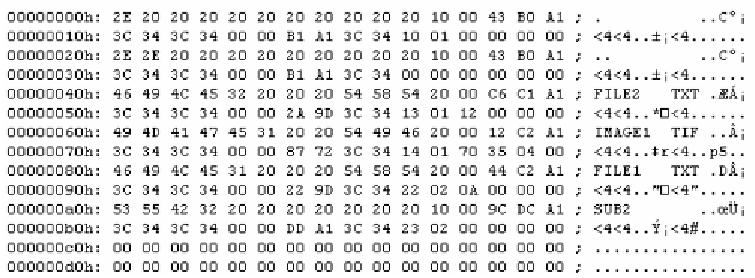Information Technology Reference
In-Depth Information
Figure 9-1: Directory entries for a subdirectory with three files and one
subdirectory. The first two entries are the dot and dotdot entries.
To help in understanding these entries, assume that a volume has a directory
called sub1, and that sub1 has a subdirectory called sub2. Figure 9-1 shows
the directory entries.
The
dot
entry points to the current subdirectory, sub2. The entry's file name
is a dot followed by seven spaces (“. ” ). The file size is zero. The contents
of the date and time fields and the directory's high and low cluster numbers
match the values in sub1's directory entry for sub2.
The
dotdot
entry points one level up, to the sub1 subdirectory in the exam-
ple. The entry's file name is two dots followed by six spaces (“.. ” ). The
file size is zero. The contents of the date and time fields are the same as in
the
dot
entry. The high and low cluster numbers match the values for the
directory one level up. These values are the cluster number in sub1's dot
entry. If sub1 is the root directory, the cluster number is zero.
The Volume Label Entry
A volume's root directory contains the one and only volume-label entry. The
entry's fields have the same meanings as they do for files with two excep-
tions: bit 0 in the Attributes field is set to 1 to indicate that the entry is for a
volume label, and for names longer than 8 characters, the file-system soft-
ware doesn't insert a dot between the file-name and file-extension fields.
(Long-file-name entries also set the volume bit but are not volume entries.)
Most software uses this volume label rather than the label stored in the par-

Search WWH ::

Custom Search